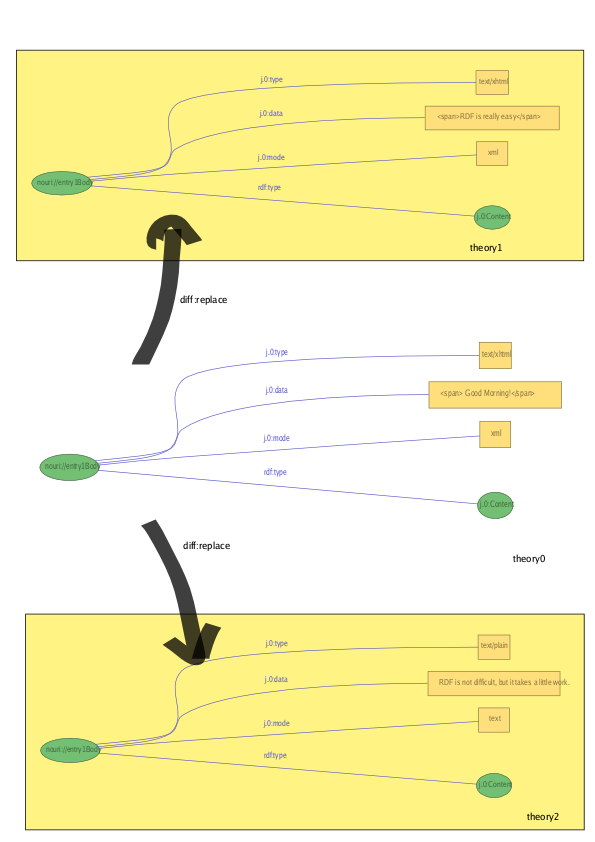- From: Henry Story <henry.story@bblfish.net>
- Date: Sat, 15 May 2004 12:42:51 +0200
- To: public-cwm-talk@w3.org
- Message-Id: <9D73B08C-A65C-11D8-B1B4-000A95D9FA7A@bblfish.net>
There is a major difference between the entailment relation a expressed
by the => sign in cwm and the diff:replacement, which I think indicates
a big conceptual difference between these two methods.
In any theory you can consistently have any number of entailment
relations with the same antecedent.
So
The cat is on the mat => the mat is under the cat
The cat is on the mat => the cat is happy
could be consistently held to be true.
On the other hand:
The cat is on the mat
{The cat is on the mat} diff:replace { The cat is on the table }
{The cat is on the mat} diff:replace { The cat is on grass }
Assuming we have somehow limited ourselves to describing the same point
in time, the above cannot be consistently held. One has to make a
choice, between the diff replacements holds. A cat cannot be at two
places at once. Yet each one of the two statements by itself is a valid
application of the diff:replace relation.
I think part of the reason for this is that implication is a relation
within first order logic, whereas diff:replace is a relation between
theories. Implication preserves truth conditions, whereas diff:replace
changes them. diff:replace is a mapping between theories. It says: the
second theory can be reached by changing the first theory in this way.
As an image I think the following will help (if file attachments are
allowed on this list)
This represents a file containing two diff:replace statements, concerning the same objects. Each diff replacement maps to a different and incompatible theory. Before continuing let me check that this mailing list accepts image attachments. Henry
Attachments
- image/png attachment: blog-diffed.n3.png

Received on Saturday, 15 May 2004 06:45:19 UTC